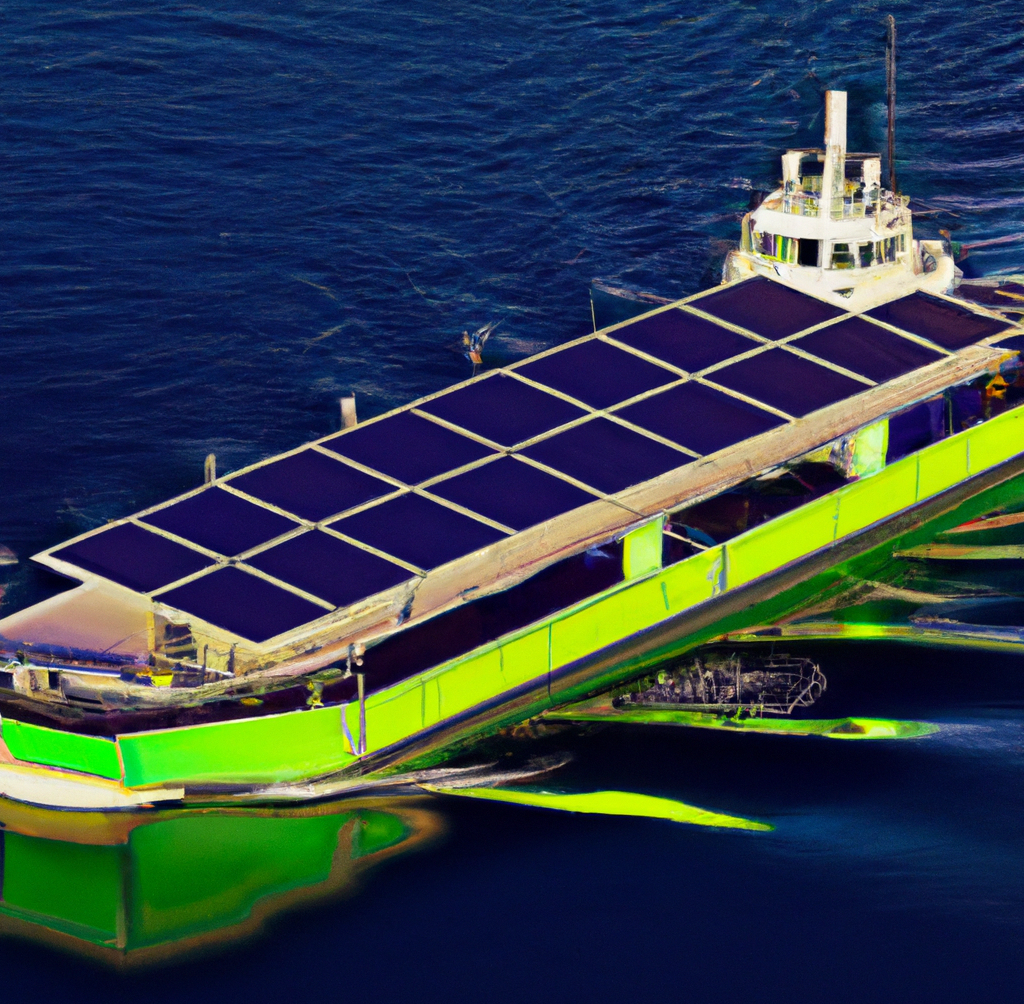What Is Carbon Neutral Shipping?
Climate change has become a buzzword, and rightly so. The temperatures are constantly rising, and glaciers are melting, which is why everyone is talking about carbon emissions. These emissions are labelled as the primary reason behind the climate crisis, as well as the extreme weather conditions that are disrupting our lives, professional life included.
Every industry is trying to minimize its carbon emissions because business logistics and shipping are producing immense amounts of black carbon. That’s the reason businesses are now focusing on carbon neutral shipping, as it’s meant to reduce carbon emissions. So, let’s check out what carbon neutral shipping is!

Understanding the Concept of Carbon Neutral Shipping
The product shipments to customers and from suppliers are creating a huge carbon footprint for your business. According to the EPA, the transportation industry is responsible for around 14% of greenhouse emissions, and 95% of the energy comes from petroleum-centric fuels, such as diesel and gasoline. In fact, ICCT says that 60,000 premature deaths happen every year because of pollution from shipping alone.
This is why carbon neutral shipping is important. It’s allowing businesses to neutralize their carbon emissions by opting for carbon neutrality projects. In addition, it also helps businesses establish a sustainable image. It’s high time that businesses set sustainability goals to meet the expectations of eco-conscious customers.
This is because 83% of the customers think that brands need to start acting sustainably. In particular, 73% of them focus on sustainability whenever they choose a brand for purchasing something, and most of them don’t shy away from paying more to a brand if they follow a sustainable approach.
Carbon neutrality is also called net zero, which is the process of balancing carbon emissions emitted by commercial activities, such as the use of fossil fuels. It is focused on removing the equivalent volume of CO2 from the environment. Having said that, carbon neutral shipping is all about offsetting the carbon emissions that come with logistics and transportation of products and goods.

Importance of Carbon Neutral Shipping
Shipping is responsible for 2 to 3% of global emissions, and by the year 2050, this number can jump to over 10%. This is the reason carbon neutral shipping is being used to mitigate the impact of shipping emissions on the environment. It helps reduce the overall carbon footprint of the shipping industry. It’s important because the shipping industry depends on fossil fuels for shipping vehicles, hence the emissions.
The good thing is that the industry players have acknowledged this. For instance, Simon Bennett represents around 80% of the container ships around the world, and they have committed to achieving de-carbonization by the year 2050. Since the majority of shipping and transportation happens through sea, this commitment by Simon Bennett is significant.

Reducing the Carbon Emissions in Shipping
There are different ways that businesses can reduce carbon emissions and limit their carbon footprint, such as:
- Calculate the Carbon Footprint
If a business wants to achieve carbon neutrality, they need to know how much carbon emissions they are producing by transporting the goods and products. You have to calculate the emissions from fuels used in transportation (shipping vehicles), packaging, and production. It might seem challenging to consider all these moving parts in your business, but you can leverage carbon neutral software solutions.
Software is integrated with an API to simplify the calculation process. You will be able to calculate the lifecycle emissions of your entire production, starting from initial production to consumer arrival. - Improve the Shipping Efficiency
Once you are done calculating the total carbon emissions, you have to work on reducing these emissions. According to the World Economic Forum, the undeniable increase in online shopping will increase the need for delivery vehicles by 36%, which might increase the chances of traffic congestion and emissions. If there is no on-time intervention, traffic congestion and delivery emissions will increase by 30%.
For this reason, it’s important that businesses invest in fuel-efficient vehicles because they can help reduce CO2 emissions as well as greenhouse gases. However, it’s evident that investing in a new fleet of shipping and delivery vehicles will be extremely costly, which is why the answer is to split the inventory.
For those who don’t know, split inventory is a well-known strategy that allows businesses to develop and maintain different distribution centres. These distribution centres store a specific portion of inventory at every location. It allows the companies to fulfil orders efficiently by shipping the products from a distribution centre that’s closest to their customers. - Reduce the Packing Waste
Packaging material is one of the primary reasons behind carbon emissions, especially if harmful materials, such as plastics, are being used. For this reason, businesses need to minimize packing waste and switch to eco-friendly packaging materials. In addition, you’ve to reduce the size and amount of packaging materials. That’s because it can play a significant role in achieving carbon neutrality.
According to MIT research, packaging emissions are responsible for 45% of total emissions produced by eCommerce businesses. If we look at the supply chain, this is more than return and transport emissions, as they make 25% and 13% of emissions, respectively. So, it’s evident that businesses can reduce their carbon emissions by limiting the use of packaging materials. - Use Recyclable Materials
With an increasing number of online shoppers, packaging material is being used to pack and deliver orders. As a result, it is increasing waste disposal. For this reason, we recommend opting for recyclable packaging materials because they help minimize waste. This is because packaging materials aren’t only for ensuring the safe delivery of your orders; they are important for sustainability as well.
The most suitable material is cardboard and kraft boxes because they are recyclable and eco-friendly. In addition, these materials can be reused, and you can find them in abundance. On the other hand, if your products need sturdier packaging solutions, you can opt for bioplastics as they are made from plant-based materials – this material can be composted.
Another option is biodegradable plastic packaging – this is a traditional plastic material that has been modified to break down quickly when it’s under light or heat. Last but not least, you can get packaging made from plant fibers, such as cotton or jute. Last but not least, we recommend using inflatable air pillows and film bags because they don’t harm the environment and can protect the products. - Use Dimensional Weight
Dimensional weight is basically a pricing technique that’s used by shipping companies for calculating the amount of space in a package. In some cases, a lightweight package might consume more space as compared to a heavy package, given the DIM weight. So, it’s recommended that you reduce the packaging amount; you might be able to save money by reducing the DIM weight. - Reduce the Use of Single-Use Plastic
It is important to secure the products during shipping and transit. For this purpose, the brands usually use bubble wrap, but it’s better to opt for recycled kraft paper. You can also use corrugated bubble wrap because it’s a reliable way of replacing plastic bubble wrapping and packing peanuts. - Buy Carbon Offsets
If you cannot implement the last methods, we recommend that you buy carbon offsets because they are a reliable way of compensating for carbon emissions. The carbon offsets are responsible for reducing greenhouse gas emissions. They are basically investments in reforestation and renewable energy projects because they help reduce or remove greenhouse gases from your atmosphere.
Carbon offsetting can actually help eCommerce businesses save money because reducing carbon emissions can reduce energy costs and improve efficiency. In addition, it promises better compliance with sustainability and carbon emission laws. - Use Renewable Energy
The packages and orders are handled through packaging facilities. So, it’s time these packaging facilities start using renewable energy. To begin with, they can focus on solar panels to produce electricity for their facilities. Another option is to replace the light bulbs with LED bulbs because they help limit emissions. - Monitor the Supply Chains
As a company, if you are focused on reducing emissions from the source, you have to monitor the supply chain properly. This is because it helps you take into account emissions created at every step of the process so you can handle the business more easily. In simpler words, monitoring the supply chain will help identify which part of the business is responsible for emissions so you can create a strategy for reducing the emissions.

Understanding the Limitations of Carbon Neutral Shipping
It’s evident that carbon neutral shipping is playing a major role in saving the environment, but there are some limitations that businesses need to know. To begin with, it can take a few years to show noticeable results. Another factor is that you will have to increase the delivery charges to compensate for the sustainable shipping systems, which might not sit well with your customers.

Impact of Carbon Neutral Shipping on the Environment
Carbon neutral shipping isn’t a fool-proof way of reducing carbon emissions from the shipping and logistics industry. For this reason, the only reliable option is to invest in carbon offsetting projects because it can help compensate for the carbon emissions. It’s important because until new eco friendly transportation modes are created, it will help businesses with emission compensation.
The Bottom Line
Carbon neutral shipping is a great way of optimizing climate change issues, but it still cannot fully evade the carbon emissions produced by package handling and shipping. As a business, it’s important to understand that carbon neutral shipping won’t prevent emissions, but it can help provide financial support that’s important for researching and instilling sustainable methods that can help save the environment.
